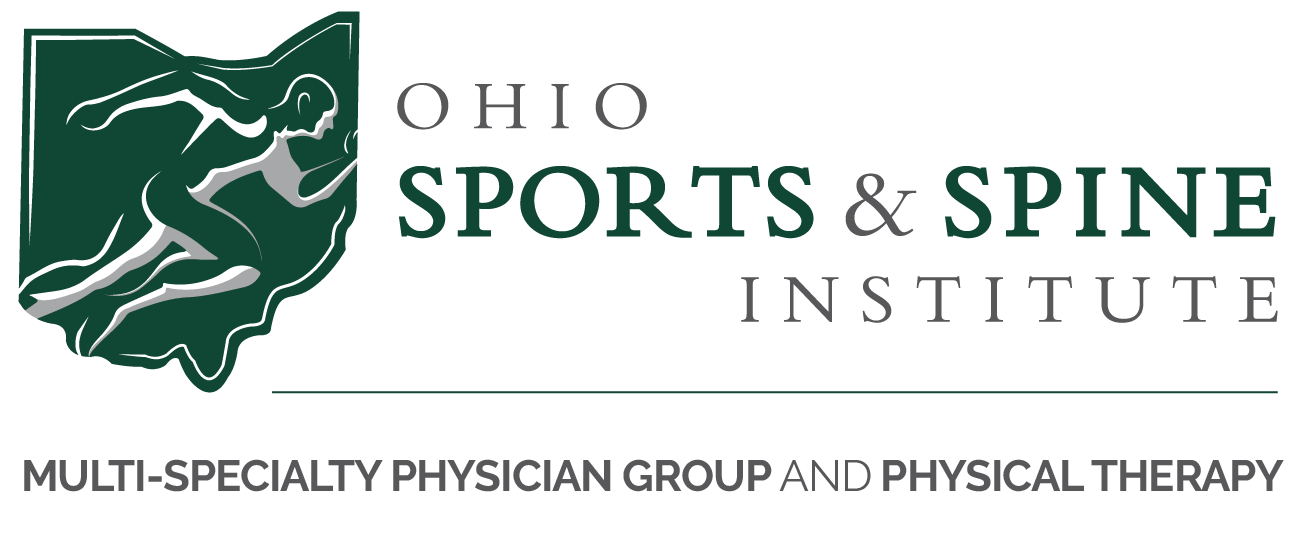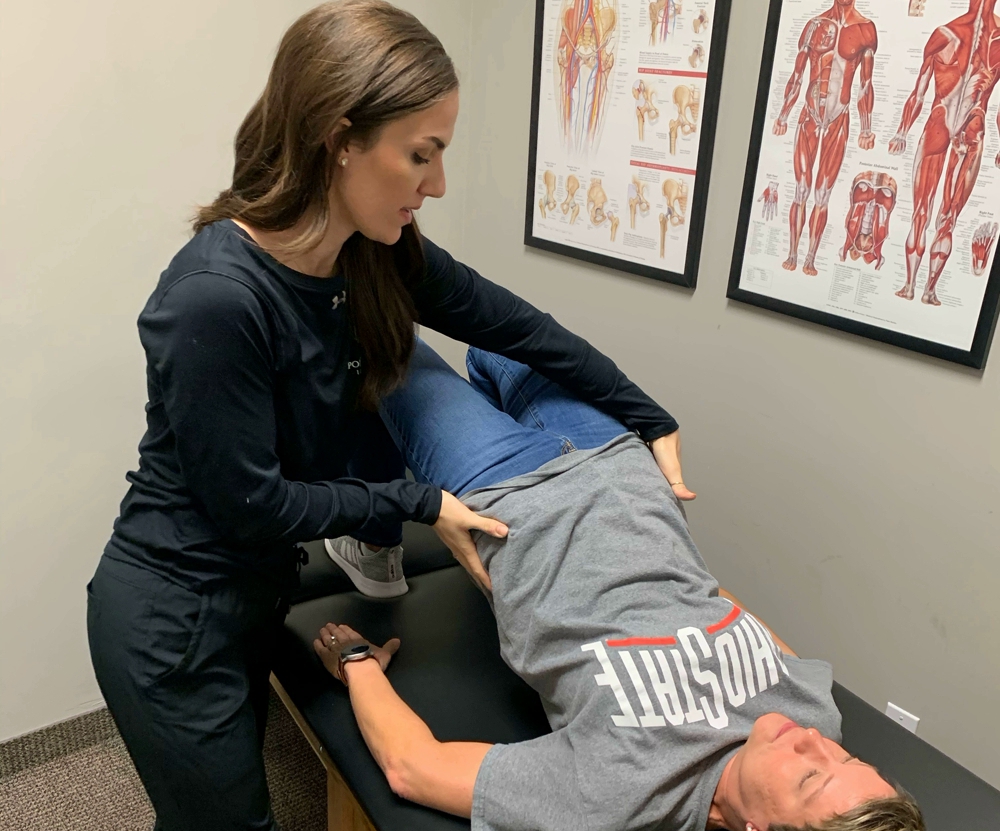Pelvic Floor Rehabilitation: What Is It and Who Needs It?
By Paige Genova, MOT, OTR-L
You may have heard the term “Kegels” before and understood it to be the cure for female pelvic floor issues. However, do you know men also have a pelvic floor? Do you know what your pelvic floor is? Are you aware of how to properly isolate and control those muscles? Did you know that Kegel strengthening exercises aren’t always the solution?
While this muscle group is extremely important to our overall mental and physical health, it often does not get the attention it deserves.
Here is what you need to know about pelvic floor health.
What is your pelvic floor?
To define the pelvic floor, it is a “sling” of muscles, a bit like a small muscle hammock, that runs between the pubic bone in the front and the tailbone at the back. That sling provides support for the organs in the pelvis, helps control the bowel and bladder, plays a role in sexual activities, provides stability by its attachments to various ligaments in the pelvis and provides postural support to the trunk.
A woman’s pelvic floor muscles support her womb (uterus), bladder and bowel (colon). The urine tube (urethra), the vagina and the anus all pass through the pelvic floor muscles.
A man’s pelvic floor muscles support his bladder and bowel. The urethra and the anus pass through a man’s pelvic floor muscles, too.
Why is the pelvic floor important?
It is NOT normal to lose control of urine or bowels at any stage in life — even in advanced age, after you’ve had a baby or after surgical intervention. It is equally as important to men as it is to women to have a properly functioning pelvic floor, and to not only be able to correctly perform strengthening exercises, but to be able to relax and stretch those same muscles.
For both men and women, the pelvic floor is just like any other muscle in the body and needs to have full range of motion. To have control over urine and bowel movements, function in daily activities without pain, successfully recover from surgeries to abdomen or pelvic region, give birth and recover from labor/delivery and be able to participate fully (and comfortably) during intercourse, you need to be able to access the pelvic floor’s full range of motion and have adequate muscle tone.
However, it may be harder than it sounds to correctly isolate your pelvic floor muscles. A recent study found almost 25 percent of women were unable to perform a pelvic muscle contraction correctly.
What are the signs and symptoms of pelvic floor dysfunction?
Pelvic floor dysfunction arises when the muscles of your pelvic floor cannot relax and stretch (stay clenched and hyperactive), contract appropriately (lack strength or muscle tone) or do not have proper coordination. With less than optimal functioning, any of the following symptoms may develop:
- Leaking of urine or bowels
- Urinary frequency (overactive bladder – needing to urinate more than every two hours)
- Sexual dysfunction (pain with orgasm, pain during intercourse, erectile dysfunction)
- Constipation and/or straining to empty bowels
- Difficulty fully emptying bladder or bowels
- Difficulty starting the flow of urine and/or bowels
- Pain or discomfort around vulva/labia (lips of vagina) with tight clothing or light touch
- Pain with insertion of tampon
- Pain with urination or bowel movements
- Sharp stabbing pains into the rectum or abdomen
- Feeling of bulge, heaviness or pressure in the vagina or rectum
- Tailbone pain lasting more than one month
- Pain in pubic bone, sacro-iliac joint (SI), low back, hip or groin that doesn’t respond to regular treatment
What should I expect with pelvic floor rehabilitation?
The initial visit includes an evaluation from an occupational therapist (OT) who is specially trained in pelvic floor rehabilitation. Occupational therapy is a holistic profession that takes into consideration the whole person, mind and body.
During initial evaluation you should expect to have a discussion regarding your experience, including an account of symptoms as well as medical history and lifestyle. You should also expect at some point during the evaluation or treatment, a visual, external and internal observation of the pelvic region and muscles of the pelvic floor, as well as your ability to contract and control the pelvic floor muscles.
The purpose of the physical examination is to obtain objective information on the strength and control of your musculature and observe for any pelvic organ prolapse, skin irritation or scarring.
During the first appointment, you will receive some initial advice and education. After the second appointment, you should have a more complete treatment plan. This plan may change based on how your body responds and what your personal goals may be.
Our personalized treatment can help you with pelvic and back pain, weak core musculature, leaking urine or bowel movements, labor/delivery preparation, postpartum recovery, urgent or frequent urination, constipation, painful intercourse, diastasis recti, perineal, episiotomy and cesarean section scarring and pelvic organ prolapse. It can also improve pre- and post-surgical outcomes for prostatectomy and assist in recovery of trauma or radiation therapy to the pelvic region.
During treatment, you’ll receive:
- Behavioral and lifestyle modifications to assist in retraining the pelvic muscles.
- Biofeedback: a painless process that uses small sensors and a computer monitor to help you visualize and identify correct muscle activity. It also helps you gain awareness of proper muscle contraction and relaxation in order to maximize exercise technique.
- Information and education regarding anatomy, diet and personal care.
- Pelvic floor and full body exercises to optimize proper function and decrease symptoms.
- Pre- and post-op interventions to improve surgical outcomes and prevent pelvic floor dysfunction.
- Prenatal exercises and modifications to decrease pain, improve engagement in everyday activities and help to create a positive pregnancy experience.
- Education on birthing positions, optimal muscle relaxation and muscle tissue stretches to help prevent tearing and episiotomy.
What are the overall benefits of pelvic floor therapy?
As mentioned, a healthy pelvic floor has many mental and physical benefits, but here are some of the most common ones:
- Regain control of your pelvic floor
- Fully participate in life without leaking
- Decrease pelvic pain/discomfort, including during sex
- Maintain an active lifestyle without pelvic pain or other dysfunction
- Learn birthing and labor strategies
- Prepare body for labor and postpartum period
For more information about pelvic floor rehabilitation, visit this page or contact our office today.
______________________________
Paige Genova is an occupational therapist at Ohio Sports & Spine Institute, who is certified in pelvic floor rehabilitation. With a background in psychology, she is equipped to understand how sensitive, personal and intimate this area of the body can be, and she is trained to meet individuals at their comfort level. She can be reached at p.genova@ossinstitute.com.




